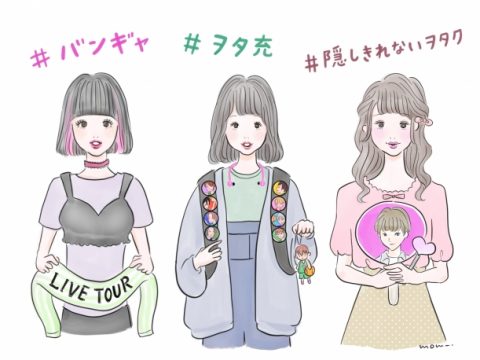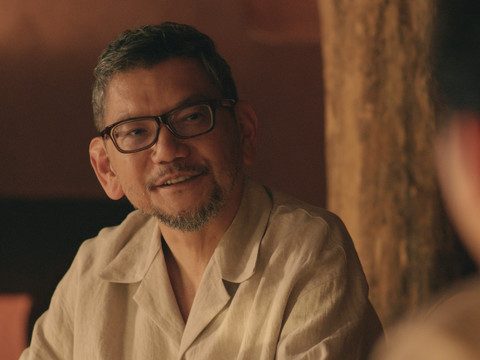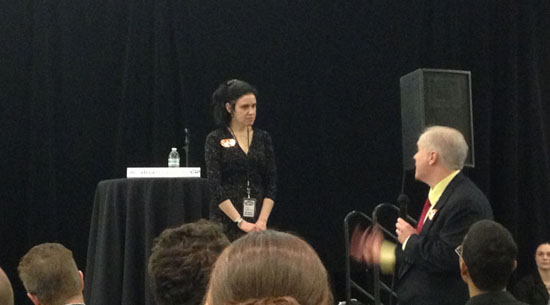
Dr. Alisa Freedman answers questions from the audience
What comes to mind when you hear the word “Denver”? The rocky mountains, no doubt. If you’re a sports person, perhaps the Broncos or Nuggets. And, of course, SANA.
Wait, that last one might need some explanation.
It’s the Summit for Anime in North America, a joint effort of the Rocky Mountain Anime Association, who run Denver’s yearly convention and the Consulate-General of Japan. At the request of the Japanese government, SANA was organized to answer a lingering question that has long-baffled Japan: why, exactly, is anime so popular in North America?
To find that answer, a super-team of the American anime community’s best and brightest were assembled on March 23 at the Denver Airport Marriott at Gateway Park to give a full day of panels and presentations, followed by a long-form roundtable Q&A session. The event was invitation-only, with the exception of a number of audience members who successfully won an essay contest on the event’s web site.
Delayed slightly due to a snowstorm that roared through Denver over the weekend, the first panelist of the day was Dr. Alisa Freedman, associate professor of Japanese Literature and Film at the University of Oregon, who discussed the role of Japanese pop-culture in the lives of young people, and how to use it as a platform to explore foreign cultures in the classroom.
“Popular culture,” Freedman said, “teaches us much about the value of the society that produces and consumes it, and helps construct images of Japan both at home and abroad.”
Dr. Freedman also postulated that persons born in the 1990s and 2000s consume and react to entertainment differently than those born in the 1980s. One giant factor in this gap is the changing way we think about Japan as a whole. In the 80s, American was filled with anti-Japan sentiment as the Japanese economy seemed poised to eat America’s whole. That sentiment is something modern generations simply don’t have to deal with.
Next up were two representatives from Funimation – the bowtie-clad ADR director and voice actor Christopher Bevins and convention/events manager Sarah Sullivan, who presided over a rousing Q&A session on the many faces of the American anime convention and American fandom in general.
“We’re more willing to let people in,” said Sullivan. “Anime fans have all the other nerd subcultures under their hood. Whatever you happen to be into, anime’s got it.”
Bevins echoed the sentiment, saying anime’s current ease of access and something-for-everyone sensibility would likely lead to mass mainstream acceptance in the coming years.
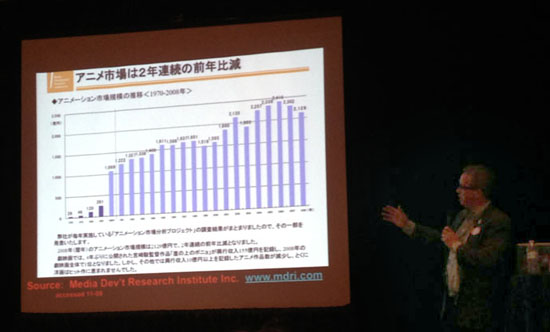
Dr. Ian Condry goes (briefly) over the sales figures of the anime industry
From Boston, Massachusetts came Dr. Ian Condry, cultural anthropologist and associate professor of Japanese cultural studies at MIT. His panel, “Collaborative Creativity and Anime’s Global Success,” charted the rise of fan-created works (citing Hatsune Miku as a particular recent example) as an interesting case study in how regular people and fans can affect pop culture – and culture in general – in a huge, global way, even without the help of social or economic “elites.”
“A lot of the talking we do about art tends to focus on the Picassos of the world,” Dr. Condry said. “Geniuses who break through in certain ways and succeed because of their own personal brilliance. But if we look a little more closely at art history or media history, it quickly becomes clear that almost all art forms come out of communities, and creativity itself comes out of the collaborative process — collaborative creativity.”
Citing the statistic that merchandise sales in the anime industry are ten times that of DVD or movie ticket sales, Dr. Condry suggested what anime creators are making is less an individual TV show or movie than a world in which viewers can participate.
One interesting bit of trivia Dr. Condry mentioned was that when he sat in on script meetings for studio Gonzo’s 2006 TV anime Red Garden, nobody had any idea where the plot was going or how things would tie up.
Featured throughout the presentation were many photos of grubby anime studio interiors, driving home an important point also shared by famous director Mamoru Oshii: “You don’t get into the anime business looking to get rich.”
Or do you? Following a short break for lunch came Kevin McKeever, director of marketing at Harmony Gold. His presentation, entitled “The Changing Face of the North American Anime Industry,” began with an overview of the economic situation leading up to the licensing and release of Robotech in 1985, followed by a summary of the show’s astonishingly strong TV ratings performance during its original airing, and the factoid that Robotech is still profitable for Harmony Gold nearly 30 years later.
McKeever capped his slides off at the 10 minute mark with the announcement that in 2007 Warner Bros., in collaboration with Tobey Maguire’s Materiel Pictures, was making a Robotech live-action movie. He then opened things up for Q&A with the audience, and sweetened by the pot by giving away Robotech merchandise to anyone who asked a question.
Read on as SANA tries to answer for all time: why do us Americans like this Japanese stuff so much?
This story originally ran in the 4/2/13 issue of the Otaku USA e-News email newsletter. If you’re not on the mailing list, then you’re reading it late! Click here to join.


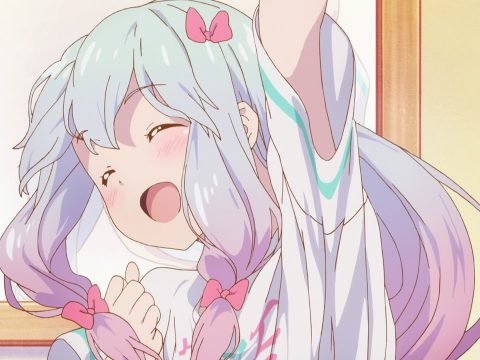
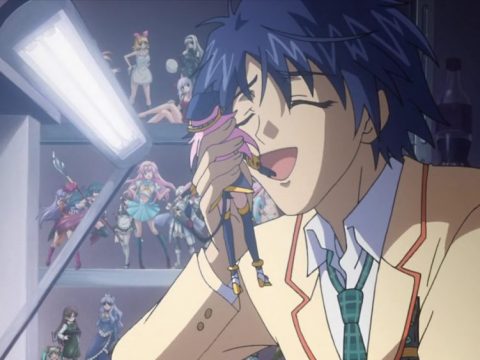
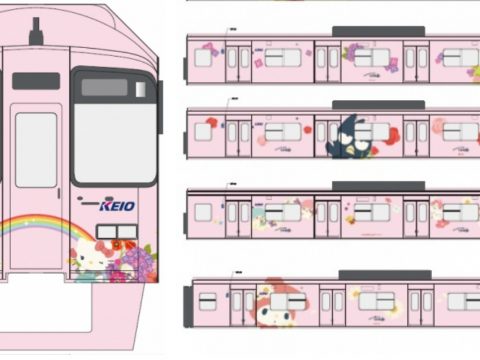
![Doc Big in Japan Offers A Guide on How (or How Not) to Get Famous in Japan [Review] Doc Big in Japan Offers A Guide on How (or How Not) to Get Famous in Japan [Review]](https://otakuusamagazine.com/wp-content/uploads/2018/07/biginjapan01-480x360.jpg)
